September 7 - 13, 2014: Issue 179
PULA
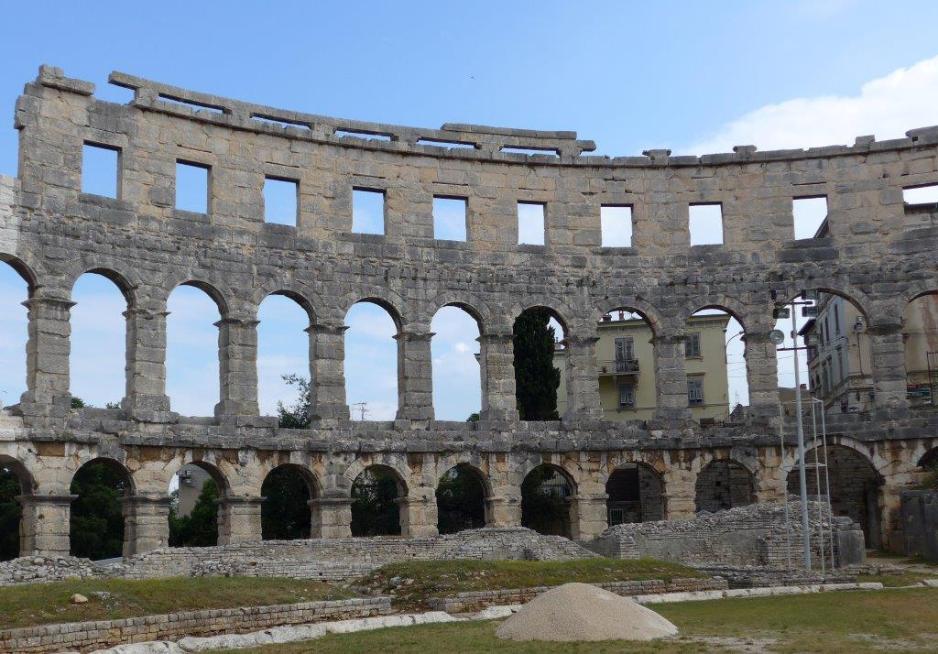
Restoration work in progress.
PULA
By George Repin
The triangular peninsula of Istria is on the eastern shore of the northern part of the Adriatic Sea between the Gulf of Trieste and the Bay of Kvarner. Apart from a small area around Trieste which is Italian and a section of Slovenia in the north stretching across to the Adriatic, it is part of the present Republic of Croatia. Because the border between Croatia and Slovenia was not precisely defined in the former Yugoslavia points of contention still remain unresolved between the two countries regarding the precise line of the border.
The important Croatian ship-building port of Pula, which lies on the western side of the southern tip of Istria, has a long, complicated and turbulent history because of the many occupations by a variety of powers over the centuries.
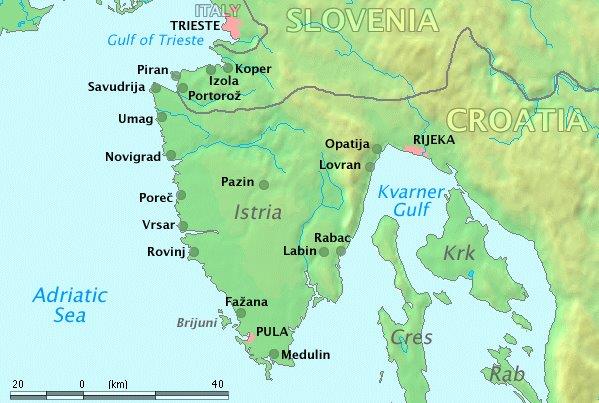
Istria.
Based on archaeological evidence, including the finding of Greek pottery and part of a statue of Apollo, it is believed that settlement in the area around Pula dates back to the 10th Century BCE.
The Romans occupied Istria in 177 BCE and Pula became a significant Roman port with a population, at one time, of about 30,000. The Romans fortified the city with a wall with ten gates some of which can be seen to this day, notably the 1st Century CE Twin Gates, theTriumphal Gate of the Sergii and the Gate of Hercules. In the period from 27 BCE to 68 CE they built the Pula Arena one of the six largest surviving Roman amphitheatres in the world and arguably the best preserved. They provided the town with a water supply and built a sewerage system.
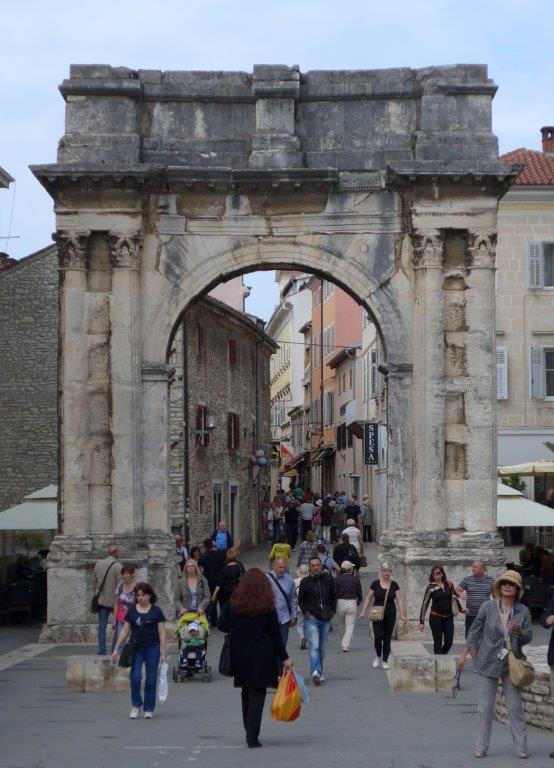
Triumphal Arch of the Sergii
After the fall of the Western Roman Empire in the early 5th Century CE the area was attacked by the Ostrogoths and in the subsequent centuries came under the control of a succession of occupying powers. These included:
• The Venetians from 1331 until 1797. In 1605 they removed four columns of oriental alabaster which now stand behind the high altar in the Basilica of St. Mark in Venice.
• The Holy Roman Empire from 1797 to 1805.
• The French during the Napoleonic period from 1806 to 1813.
• The Hapsburg Austrian Empire from 1814 to 1918.
• Italy from 1919 to 1945
• Yugoslavia 1945 to 1991 and, after the breakup of Jugoslavia,
• Croatia
Evidence of some of the occupations can be readily found in Pula. In addition to the remnants of Roman walls there are buildings recognisable as Greek, Venetian, Hapsburg and modern Italian from the Fascist period – some in juxtaposition to each other.
From October 1904 to March 1905 James Joyce taught English in Pula to Austro-Hungarian Naval Officers. The population of Pula at the time of the 2011 census was 57,765.
Although there are some interesting old churches the Roman Amphitheatre is the main attraction for tourists to Pula. It has been partly restored. It seated 23,000 spectators for gladiatorial combats and today seats up to 5,000 for concerts and film festivals. A series of large spaces and passageways underlie the arena where gladiators prepared and from which animals and fighters could be released into the arena. Luciano Pavarotti, Andrea Bocelli and Jose Carreras have performed there and it has been the scene for “pop” concerts. Parts of the movie Gladiator were filmed in the Pula Arena.
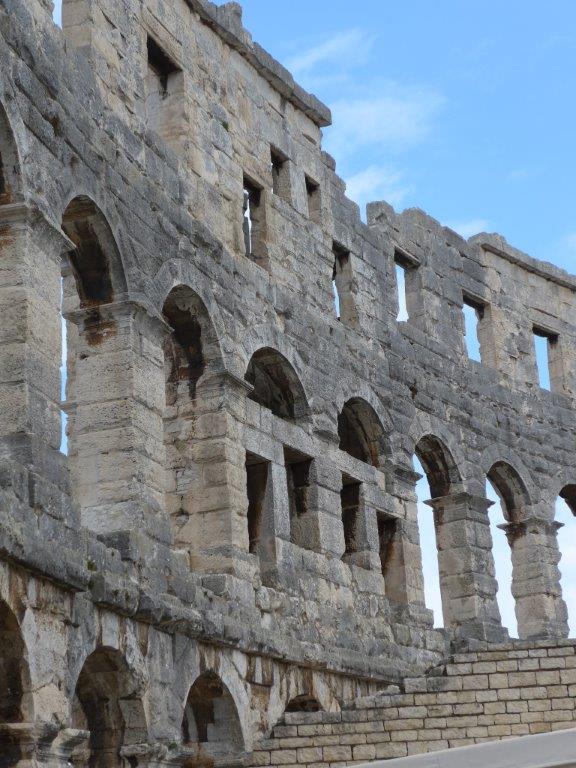
Partly restored wall of the amphitheatre.
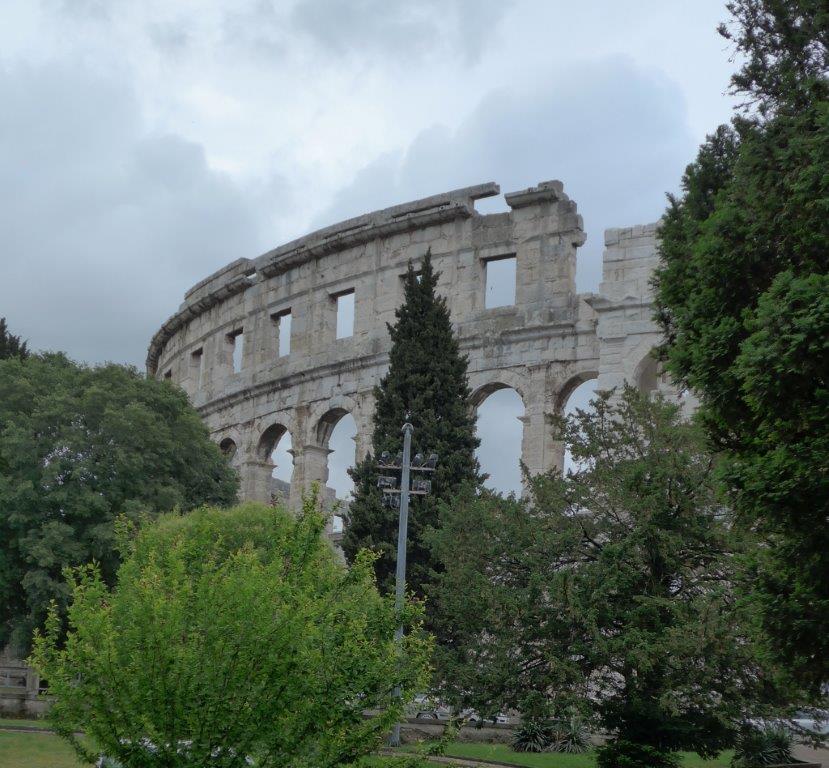
Roman amphitheatre seen from outside.
Photographs by George Repin on 28 May, 2014
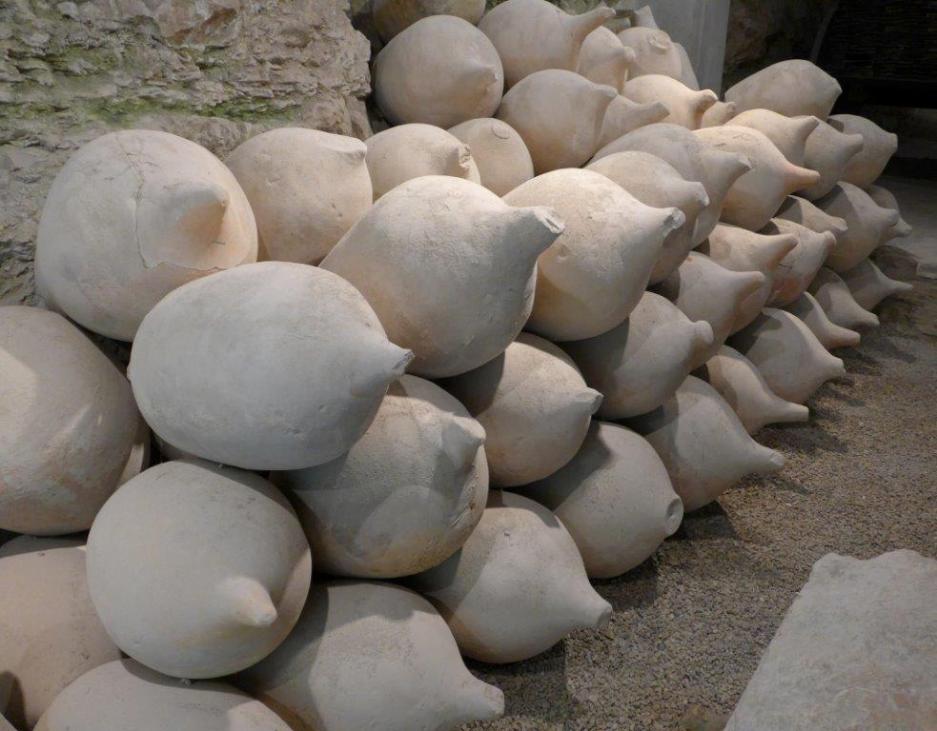
Amphora (for wine or olive oil) stored under the arena.
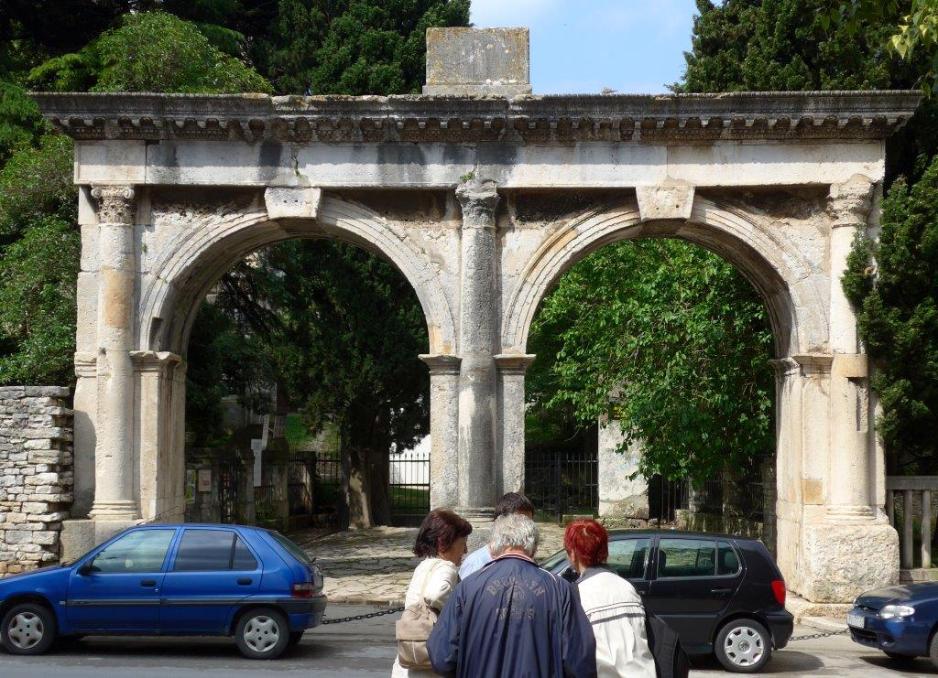
The Twin Gates.
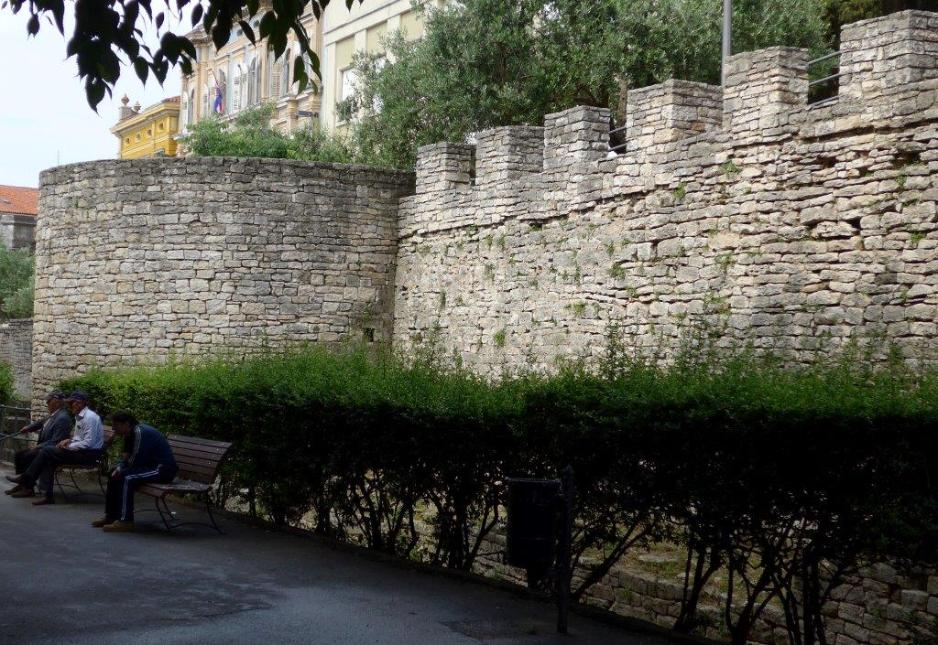
Part of the Roman wall with a bastion.
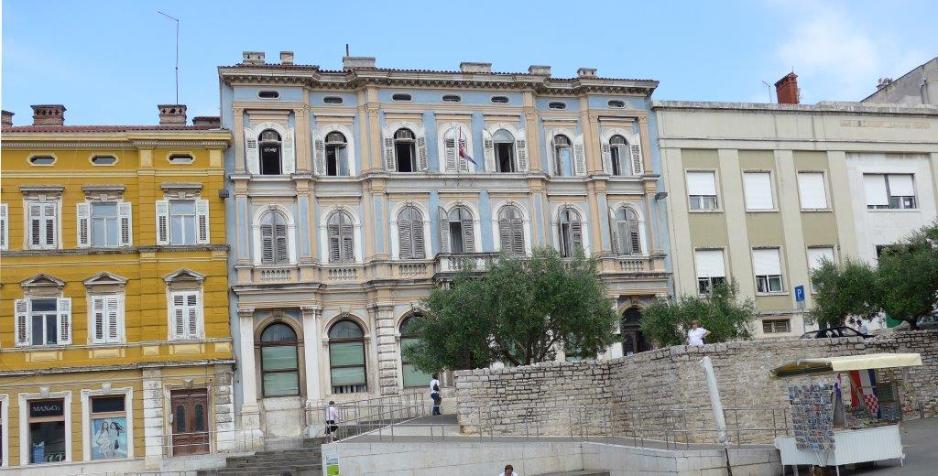
Left to Right - Greek, Venetian and modern Italian style buildings side by side.
Copyright George Repin 2014. All Rights Reserved.